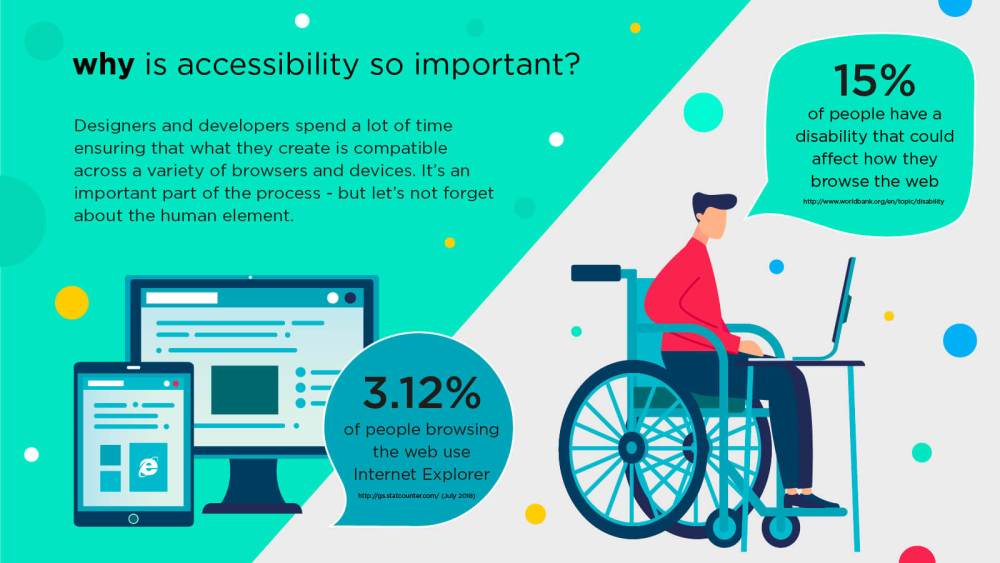Web Accessibility - a legal requirement, but a moral one too.
19 Jul 2018

In the UK, and many other countries, there is a legal requirement for you to make your service is accessible to everyone who needs it, and if it isn’t, you may be in breach of the Equality Act 2010.
To meet government accessibility requirements, you must meet level AA of the Web Content Accessibility Guidelines (WCAG 2.0) as a minimum. In the US, companies have been successfully sued under the similar ADA, and this is something that’s very likely to become more prevalent over here.
These are important things to bear in mind - but we don’t believe that an organisation's legal obligations should be the sole driving force behind improving accessibility.
Did you know that 12.9 million people in the UK alone have a disability? That’s without even mentioning our longer life expectancy, resulting in an aging population and more users who have a different user experience as a result of their age.
As the world becomes more and more reliant on technology, these people become more and more at risk of being excluded from society in some way. That’s a problem that we should all want to fix - if we’re making a product available for the public to use, then we have a moral obligation to make it accessible for everyone who could potentially want or need to use it.
Not sure exactly what could affect a user’s ability to access a website? We’ve put together some examples of the types of disability and how quickly an non-inclusive site design can alienate those affected:
Auditory & Speech
If you don’t have a contact form or email address on your site a customer with hearing or speech difficulties is likely to struggle with needing to contact you by phone and will therefore choose to go elsewhere.
Cognitive
You may have used an inaccessible font-family on your site because you only considered how it looks - someone with a cognitive impairment like dyslexia might quickly give up on trying to read it.
Neurological
You might have opted to display certain important information on your site via rollover, but have you considered that a customer with Parkinson’s Disease may have shaking hands and struggle to keep a mouse steady?
Physical
It’s possible that you may have included a link or button on your site that cannot be seen - someone who is paralysed may use speech-recognition tools, and they rely on actionable items being visible on the screen so that they can be verbally “clicked”.
Visual
Lots of sites include text links in the main copy and often they’re ‘made obvious’ by being in a different colour font. This sounds okay, until you think about the fact that anyone with colour blindness will struggle with calls to action that are visually conveyed through colour alone.
Signal's accessibility committee realised recently that a short, visual and shareable guide to the basics of web accessibility would be a valuable resource - condensing the key points and hopefully sparking an interest in finding out more in its readers. Take a look at our web accessibility infographic.

Please login to comment.
Comments